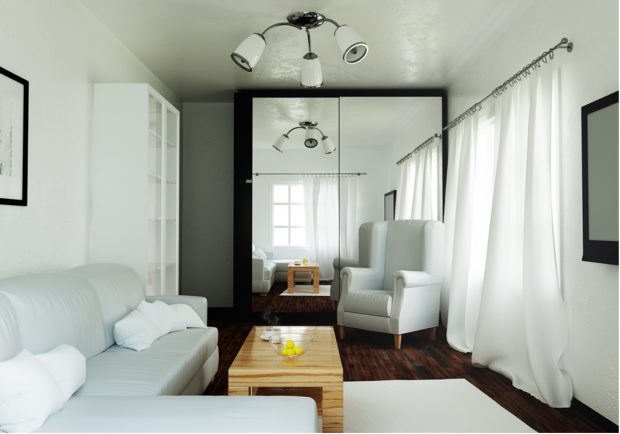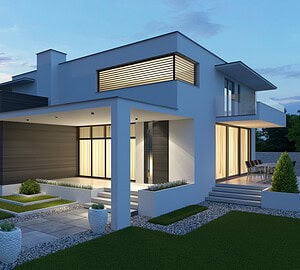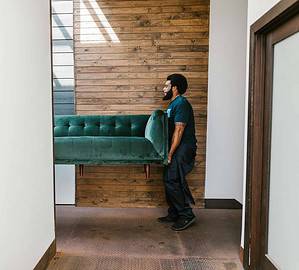Light is a critically important element of creating a welcoming and comfortable space in your home. Unfortunately, many of us have an area in our homes that just doesn’t get as much light as we wish it did.
Maybe you just moved into a new place and noticed that the back bedroom hides from the sun, or maybe you’ve always struggled to get sufficient light into your garden apartment. Whatever your situation, know this: There are things you can do to brighten that dark room!
Like what, you ask? We’ve got a whole range of ideas, from lighted signs to mirrors to colorful decor. It’s time to make your life a little more cheerful with these six shining suggestions for brightening a dark room.
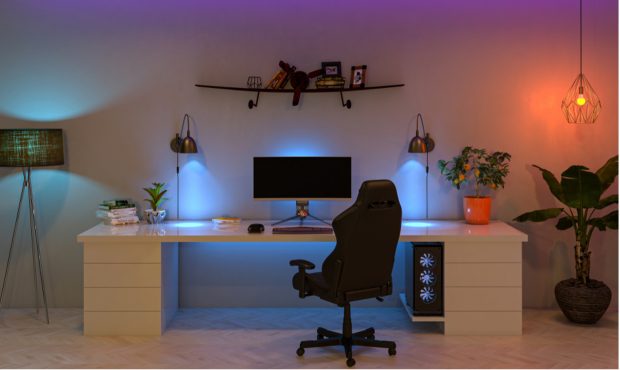
Source: pozitivo/Shutterstock
1. Use soft ambient light sources to provide just the right light level
Soft ambient light sources are great ways to provide a pleasant but not overwhelming level of brightness for a darker room. If you’ve got a space where you won’t need constant full lighting, such as a TV room or lounge, these slightly more subdued lights could be just what you need. Put a few of them together and you’ve got a genuinely pleasant setup.
By soft ambient lights, we’re referring to lighting that produces a warm and cozy type of lighting. String fairy lights and orb lights are some of the most popular, but funkier choices like lighted signs can provide a unique counterpoint. Remember that lighting temperature is a key part of this type of lighting — soft ambiance usually lives in the 2500k to 2700k range, and should rarely go over 3000k.
2. Decorate the room primarily with light colors
The lighter your decorating colors, the more the room will reflect light throughout the space. Painting your walls a color like white or light beige can provide an almost instant boost to a room’s light level. If these colors seem too boring, remember that you can always add patterns in the trim, an accent wall or even some peel and stick wallpaper with a bright pattern.
Walls, however, are only the beginning. Using light colors throughout the room’s decor, including furniture and rugs, will contribute to an overall brighter appearance. Speaking of rugs, get one. A light-colored area rug is one of the most effective ways to quickly improve a room’s lighting situation other than light-colored walls.
3. Use mirrors to reflect light
If the room gets any natural light, you can use strategically positioned mirrors to stretch that illumination as far as possible. Watch how light enters the room and position a mirror to catch and reflect it. Of course, as with any other tip listed here, don’t go overboard. For example, you usually don’t want to position a mirror so that it blasts the morning sun straight into your eyes as you wake up.
Source: YakovlevSV/Shutterstock
Furthermore, the light doesn’t even have to be natural to make adding a mirror or two a good idea. A mirror set to reflect a desk lamp will often produce a measurable improvement in a room’s lighting, and the size of the improvement increases with the size of the lamp and the mirror. It’s a clever way to make the room a little brighter and homier without overloading it with excessive lamps.
4. Choose minimalist furniture with a lower profile
Earlier, we touched briefly on the color of furniture, but the size and design of furniture can be just as important. Large furniture with a high profile can cause a room to feel crowded and reduce the amount of free light reflecting. That enormous dark oak armoire might look handsome, but it can also eat an awful lot of light, so think about the compromises you’ll be making between light and decor.
Thus, when decorating a room that gets less natural light, it’s a good idea to choose smaller and lower-profile furniture whenever possible. In addition, leave as much space between your furniture as possible. Mid-century modern furniture is a great choice for low-light rooms since most of it is low to the ground and relatively minimal in design.
5. Use task lighting to ensure your lights are practical
Task lighting is the simple but effective concept of placing purpose-oriented lights in specific areas where you need extra illumination. In some places, this will be easy, such as adding a desk lamp to your workspace. In other places, such as the sink in the bathroom and the sink and counters in the kitchen, you’ll need a little more creativity.
Installing recessed lights in these spaces is one popular way to add task lighting. Pendant lights are also a good option, particularly for spaces like kitchen counters where you need clear visibility in a small area. And while it’s not everyone’s favorite, track lighting wins a lot of points for being a cost-effective solution that’s easy to install and easy to reposition as necessary.
6. Pay attention to your windows
It might seem obvious, but we really can’t stress enough how important it is to allow your windows to do everything they’re capable of. First, choose lighter colored curtains or drapes. Even if you use blackout curtains, choosing a light grey or beige color for them will prevent them from absorbing so much light when you have them open.
Second, keep your windows clean! You might not think that a dirty window makes a difference to the light level, but we can assure you that it does. Regularly cleaning windows (inside and out) with a glass cleaning solution will help remove the thin film of dirt that accumulates on most windows and blocks natural light. Plus, it’ll make your windows look a lot better.
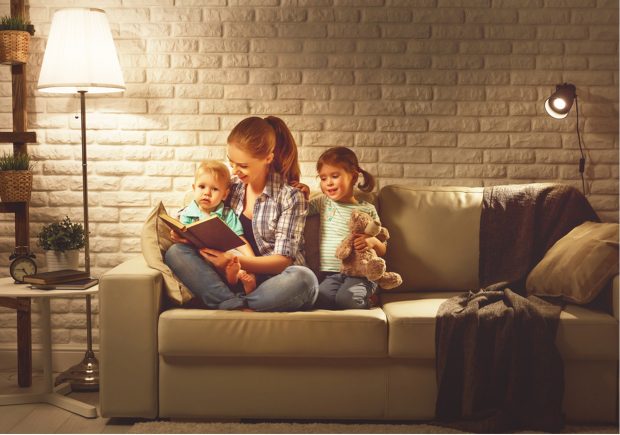
Source: Evgeny Atamanenko/Shutterstock
Don’t give up on that dark room. It’s got some light in it yet. Follow the tips we’ve talked about here, and your rooms will be cheerier and more accessible even if the sun is an infrequent guest.

